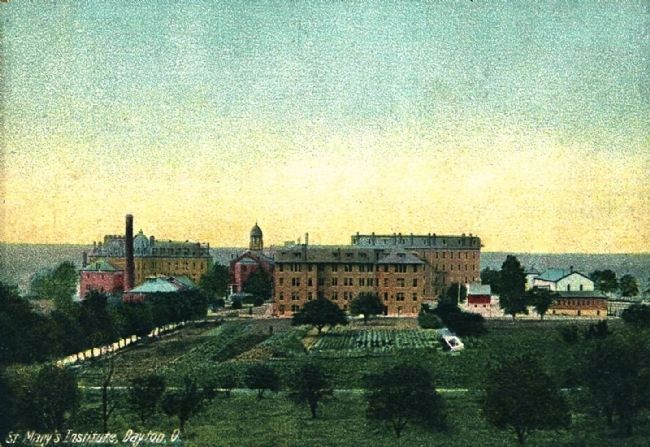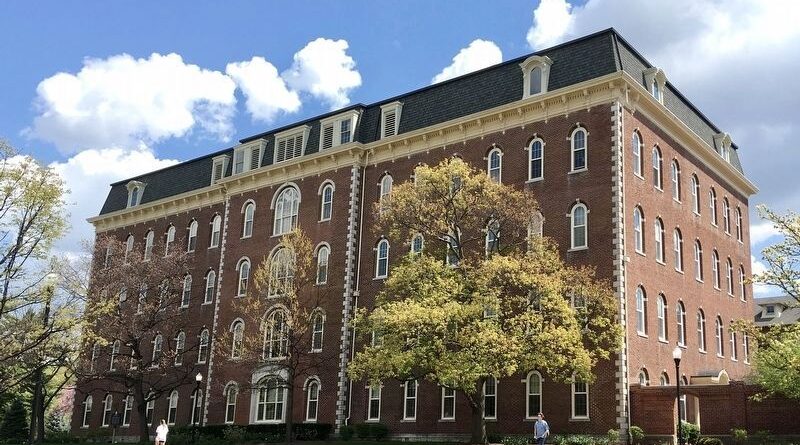A look into the history of St. Mary’s Hall
Pictured is St. Mary’s Hall. Photo courtesy of Craig Baker.
Samantha Neveril | Contributing Writer
When the Great Flood of 1913 left the city of Dayton in ruins, 65,000 people were displaced from their homes.
The University of Dayton, formerly known as St. Mary’s College, became a safe haven for some of the stranded civilians. The school was able to house over 800 refugees in St. Mary’s Hall, providing them with food and other necessities.
Since its significant contribution during the flood, St. Mary’s Hall and its role on campus have evolved over time. The building, having been around for over 150 years, is home to much of UD’s rich history, even though most students are unaware of the building’s significance.
The building was named St. Mary’s Hall because it reflected the university’s name when it was built. It was created to house the school’s new college department.
Brother Maximin Zehler, the president at the time, and Father Reinbolt designed the building. According to the university, construction costs ranged from $80,000 to $85,000 and construction began in 1870.
When St. Mary’s Hall opened in 1871, the five-story structure became the tallest and largest building in Dayton. It was nicknamed “Zehler’s Folly” because people believed the building was so oversized.

From left to right; Pictured is a postcard of St. Joseph’s Hall, the Chapel of the Immaculate Conception, Chaminade Hall, and St. Mary’s Hall. Photographed By J.B. Meller & Son (1907).
Throughout the years, St. Mary’s Hall has been student dormitories, classrooms, dining facilities, offices, and more.
In recent years, St. Mary’s Hall has been an administrative building. It houses the office of the bursar, human resources, legal affairs, graduate academic affairs, Flyer Student Services, the office of the provost, President Spina’s office and more.
Since it is not an academic building, many students have little to no experience with the building. Consequently, even though the building has been on campus since the late 19th century, much of its history has been overshadowed by other buildings.
Megan Saylor, a sophomore finance major, is one student who is familiar with St. Mary’s Hall. She works there for the office of the registrar.
Saylor explained what she knew about the building in an interview in early February.
Even though she works in the building, Saylor was unaware of its history or its significance on campus. All she knew is that it was one of the older buildings on campus.
“You can tell it’s not a typical UD building,” Saylor said. “You can tell it’s old. The doors are wood and there is a cool staircase that is different from other buildings.”
Saylor believes other students on campus are uneducated in regard to the history of the building.
“If you ask a random student what the building is used for, they normally don’t know,” Saylor said. “Most people don’t even know where it is because they’ve never had to go there.”
Kate Barry, a senior marketing major, can attest to Saylor’s claim. When asked in an interview, Barry could vaguely remember visiting the building once her freshman year to visit Flyer Student Services, but she did not know what else the building was used for or any of its history.
The evolution of St. Mary’s Hall from a refuge during the flood to its current role as an administrative building demonstrates its enduring significance within the University of Dayton’s history.
Whether students are familiar with the building or not, it has been registered as a historical marker since 1974 and will continue to be a symbol of the University of Dayton’s past.
For more information on news around campus click here!

